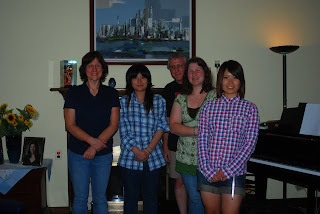And Zap! Just like that August is over. With today’s blog, I have completed my pledge to post something every day this month. In hindsight, the month flew by, like the summer flew by, like last year flew by, like life seems to fly by.
I can’t remember where, but a long time ago I read a story about a girl who wanted to be an artist and she asked her teacher if she should move to another city to take a year-long art class. The teacher replied, “It doesn’t matter, the year will pass either way.” The month of August would have passed whether I wrote this blog or not and in the grand scheme of things, it really doesn’t matter that I did so. Yet, I am very glad I did because somehow, daily writing made August less ephemeral. Time did not slow down, but I left behind concrete evidence of my thoughts and ideas.
I can’t remember where, but a long time ago I read a story about a girl who wanted to be an artist and she asked her teacher if she should move to another city to take a year-long art class. The teacher replied, “It doesn’t matter, the year will pass either way.” The month of August would have passed whether I wrote this blog or not and in the grand scheme of things, it really doesn’t matter that I did so. Yet, I am very glad I did because somehow, daily writing made August less ephemeral. Time did not slow down, but I left behind concrete evidence of my thoughts and ideas.
There is no way that I can continue to write this blog on a daily basis. Soon my evenings will fill with University events, and the work days will be longer and more tiring. On average, this blog has been taking a couple of hours each day, by the time I think of something to write, write it, then rewrite it in readable English, find a photo or two for fun, and post it. Then, look at it, edit it and post it again. Then, look at, edit it. Ok, you get the idea. (As I told you way back on day one, I am just the tiniest bit type A.) Al says he’s looking forward to having a little more company in the evenings, although he may change his mind when he actually does.
Yet, I really enjoy this writing project and I don’t want to stop cold turkey. So, here’s the plan. First, I am going to take a little break. Then, my new pledge is to post something to this blog every Sunday, starting on September 12 and continuing through May 15. That will take me through an entire academic year and after that I’ll decide what to do next summer. Of course, I reserve the right to write more but never less. My Sunday Pledge will require about 36 posts over eight months, which seems easy since I wrote 31 posts in just one month.
I don’t know if the format or style will change; I have 12 days to decide. I plan to continue my list of those things I am grateful for and see how long I can go with no repeats. Thinking regularly about gratitude reminds me how lucky and blessed I really am, a focus that improves my attitude and softens the edges of inevitable frustrations and disappointments.
For a few days now, I have wanted to share a poem I did not write, but really I wish I had. I have already used this in other contexts, and some of you may know it. But I love this little poem and it seems worth repeating:
What We Need by David Budbill
The Emperor,
his bullies
and henchmen
terrorize the world
every day,
which is why
every day
we need
a little poem
of kindness,
a small song
of peace
a brief moment
of joy.
The Emperor,
his bullies
and henchmen
terrorize the world
every day,
which is why
every day
we need
a little poem
of kindness,
a small song
of peace
a brief moment
of joy.
So today I share this little poem of kindness and song of peace. Today and every day, I wish you a brief moment of joy.
Today I am grateful that you took the time to read my blog, and even came back regularly. The knowledge that you were doing so helped me keep going. I hope you found something interesting once in a while. Thank you.






.JPG)









